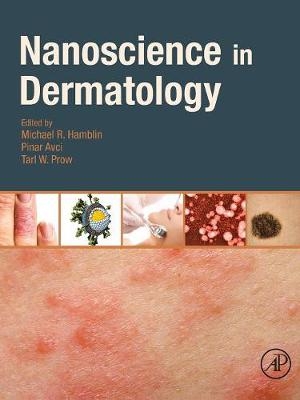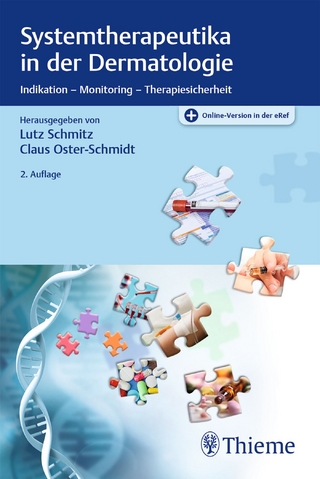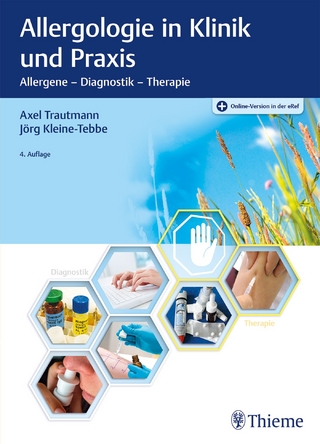
Nanoscience in Dermatology
Academic Press Inc (Verlag)
978-0-12-802926-8 (ISBN)
Light sensitive nanoparticles have recently been explored, opening a new era for the combined applications of light with nanotechnology, also called photonanodermatology. However, concerns have been raised regarding the adverse effects of intentional and unintentional nanoparticle exposure and their toxicity.
Written by experts working in these exciting fields, this book extensively covers nanotechnology applications, together with the fundamentals and toxicity aspects. It not only addresses current applications of nanotechnology, but also discusses future trends of these ever-growing and rapidly changing fields, providing scientists and dermatologists with a clear understanding of the advantages and challenges of nanotechnology in skin medicine.
Michael R Hamblin Ph.D. is a Principal Investigator at the Wellman Center for Photomedicine at Massachusetts General Hospital, an Associate Professor of Dermatology at Harvard Medical School and is a member of the affiliated faculty of the Harvard-MIT Division of Health Science and Technology. He was trained as a synthetic organic chemist and received his PhD from Trent University in England. His research interests lie in the areas of photodynamic therapy (PDT) for infections, cancer, and heart disease and in low-level light therapy (LLLT) for wound healing, arthritis, traumatic brain injury and hair-regrowth. He directs a laboratory of around a sixteen post-doctoral fellows, visiting scientists and graduate students. His research program is supported by NIH, CDMRP, USAFOSR and CIMIT among other funding agencies. He has published 252 peer-reviewed articles, over 150 conference proceedings, book chapters and International abstracts and holds 8 patents. He is Associate Editor for 7 journals, on the editorial board of a further 12 journals and serves on NIH Study Sections. For the past 9 years Dr Hamblin has chaired an annual conference at SPIE Photonics West entitled "Mechanisms for low level light therapy" and he has edited the 9 proceedings volumes together with four other major textbooks on PDT and photomedicine. He has several other book projects in progress at various stages of completion. In 2011 Dr Hamblin was honored by election as a Fellow of SPIE. Pinar Avci, MD is a Research Fellow in Wellman Center for Photomedicine, Massachusetts General Hospital and Harvard Medical School Department of Dermatology, Boston USA. She received her MD degree in General Medicine from Semmelweis University, and is currently pursuing her PhD in Department of Dermatology, Venereology and Dermato-oncology, Semmelweis University, Budapest, Hungary. She is currently conducting research in the area of Photodynamic therapy (PDT) – a localized approach for treatment of cancer and infections and its effects in developing anti-tumor immunity. In 2004, Dr Prow earned his Ph.D. from the University of Texas in the field of Nanomedicine. He then completed his T32 funded post-doc at the Wilmer Eye Institute at The Johns Hopkins Hospital and was faculty there until he relocated to the University of Queensland in Brisbane, Australia in 2007. In 2011 Dr Prow became the Deputy Director of the Dermatology Research Centre. In 2015, Dr Prow was promoted to Associate Professor within the University of Queensland's School of Medicine. He leads a NHMRC and ARC funded team that focuses on drug delivery, diagnostics and imaging in the context of dermatology.
1. Anatomy and Function of the Skin Yolanda Gilaberte, Lucia Prieto-Torres, Ievgenia Pastushenko and Ángeles Juarranz
2. Fundamentals of Nanoscience (and Nanotechnology) G. Louis Hornyak and Anil K. Rao
3. An Overview of Nanomaterials in Dermatology Breanne Mordorski, Angelo Landriscina, Adam Friedman
4. Clinical Impact and Patient Safety: The Potential of Microneedles in Changing the Form and Perception of Transdermal Drug Delivery Aaron J. Brady and Ryan F. Donnelly
5. Inorganic nanoparticles for transdermal drug delivery and topical application Min Wang, Srujan Kumar Marepally, Praveen Kumar Vemula and Chenjie Xu
6. Biodegradable, Biocompatible and Bioconjugate Materials as Delivery Agents in Dermatology Fiorenza Rancan
7. Peptide Dendrimers in Delivery of Bioactive Molecules to Skin Jyothsna Menon, Aswathi R Hegde, Harendra S. Parekh and Srinivas Mutalik
8. Insights into Interactions of Gold Nanoparticles with the Skin and Potential Dermatological Applications Nesma El-Sayed, Labiba El-Khourdagui and Marc Schneider
9. Formulation Effects on Topical Nanoparticle Penetration Heather A.E. Benson, Yousuf Mohammed, Jeffrey E. Grice, Michael S. Roberts
10. Nitric Oxide-Releasing Nanoparticles as an Antimicrobial Therapeutic Jamie Rosen, Angelo Landriscina, and Joshua D. Nosanchuk
11. Nanoparticles in the topical treatment of cutaneous Leishmaniasis: gaps, facts and perspectives Socorro Espuelas, Juana Schwartz and Esther Moreno
12. Nanotechnology based nano-bullets in antipsoriatic drug delivery: state of the art Mahfoozur Rahman, Sarwar Beg , Firoz Anwar, and Vikas Kumar
13. Nanoparticles for Treatment of atopic dermatitis Mona M. A. Abdel-Mottaleb
14. Challenges and opportunities of nanoparticle-based theranostics in skin cancer Stefania Pizzimenti, Chiara Dianzani, Gian Paolo Zara, Carlo Ferretti, Federica Rossi, Casimiro Luca Gigliotti, Martina Daga, Eric Stefano Ciamporcero, Giovanni Maina and Giuseppina Barrera
15. Nanodelivery of anti-cancer agents in melanoma: encouraging but a long way to go Jiezhong Chen and Xu Dong Zhang
16. Targeted Nanoparticles for Drug Delivery to Melanoma: From Bench to Bedside Jun Li, Yi Zhang and Juan Tao
17. The Potential for Metal Nanoparticle Enhanced Radiotherapy in Dermatology Van L.T. Hoang, Matthew C. Foote, Tarl W. Prow
18. Nanotechnology in Photoprotection Lucy L. Chen, Steven Q. Wang
19. Nanoemulsions to Prevent Photoaging Allesandro Afornali and Márcio Lorencini
20. Decoupling hazard from risk in using sunscreens containing metal oxide nanoparticles Megan J. Osmond McLeod
21. Nanoparticle Oxygen Sensing in Skin Zongxi Li and Conor L. Evans
22. Investigating the intracellular dynamics of Hypericin loaded nanoparticles and polyvinylpyrrolidone-Hypericin by image correlation spectroscopy Rozhin Penjweini, Sarah Deville, Anitha Ethirajan and Marcel Ameloot
23. Accelerated Wound Healing Using Nanoparticles Ee Teng Goh, Georgia Kirby, Jayakumar Rajadas, Xing-Jie Liang and Aaron Tan
24. Migration through naturally existing barriers and distribution of QDs in the skin Ricardas Rotomskis
25. Nanomedicines for the Eye: Current Status and Future Development Anthony A. Attama, Joy N. Reginald-Opara, Emmanuel M. Uronnachi and Ebele B. Onuigbo
26. Bioinspired Nano-Substrates for Skin Regeneration Shima Tavakol, Sasan Jalili-Firoozinezhad, Omid Mashinchian and Morteza Mahmoudi
27. Imaging Nanoparticle Skin Penetration in Humans Lynlee L. Lin, Miko Yamada and Tarl W. Prow
28. EGF-loaded Nanofibers for Skin Tissue Engineering Mohammad Norouzi and Masoud Soleimani
| Erscheinungsdatum | 12.09.2016 |
|---|---|
| Verlagsort | San Diego |
| Sprache | englisch |
| Maße | 216 x 276 mm |
| Gewicht | 1090 g |
| Themenwelt | Medizin / Pharmazie ► Medizinische Fachgebiete ► Dermatologie |
| Medizin / Pharmazie ► Medizinische Fachgebiete ► Medizinethik | |
| Technik | |
| ISBN-10 | 0-12-802926-9 / 0128029269 |
| ISBN-13 | 978-0-12-802926-8 / 9780128029268 |
| Zustand | Neuware |
| Informationen gemäß Produktsicherheitsverordnung (GPSR) | |
| Haben Sie eine Frage zum Produkt? |
aus dem Bereich


